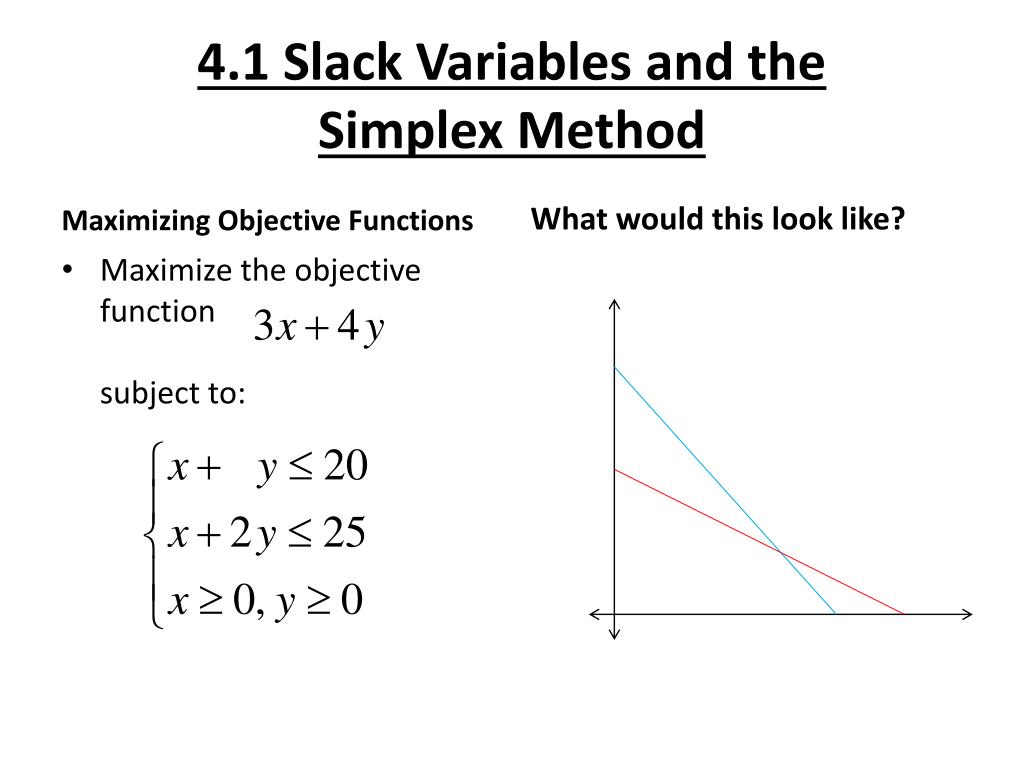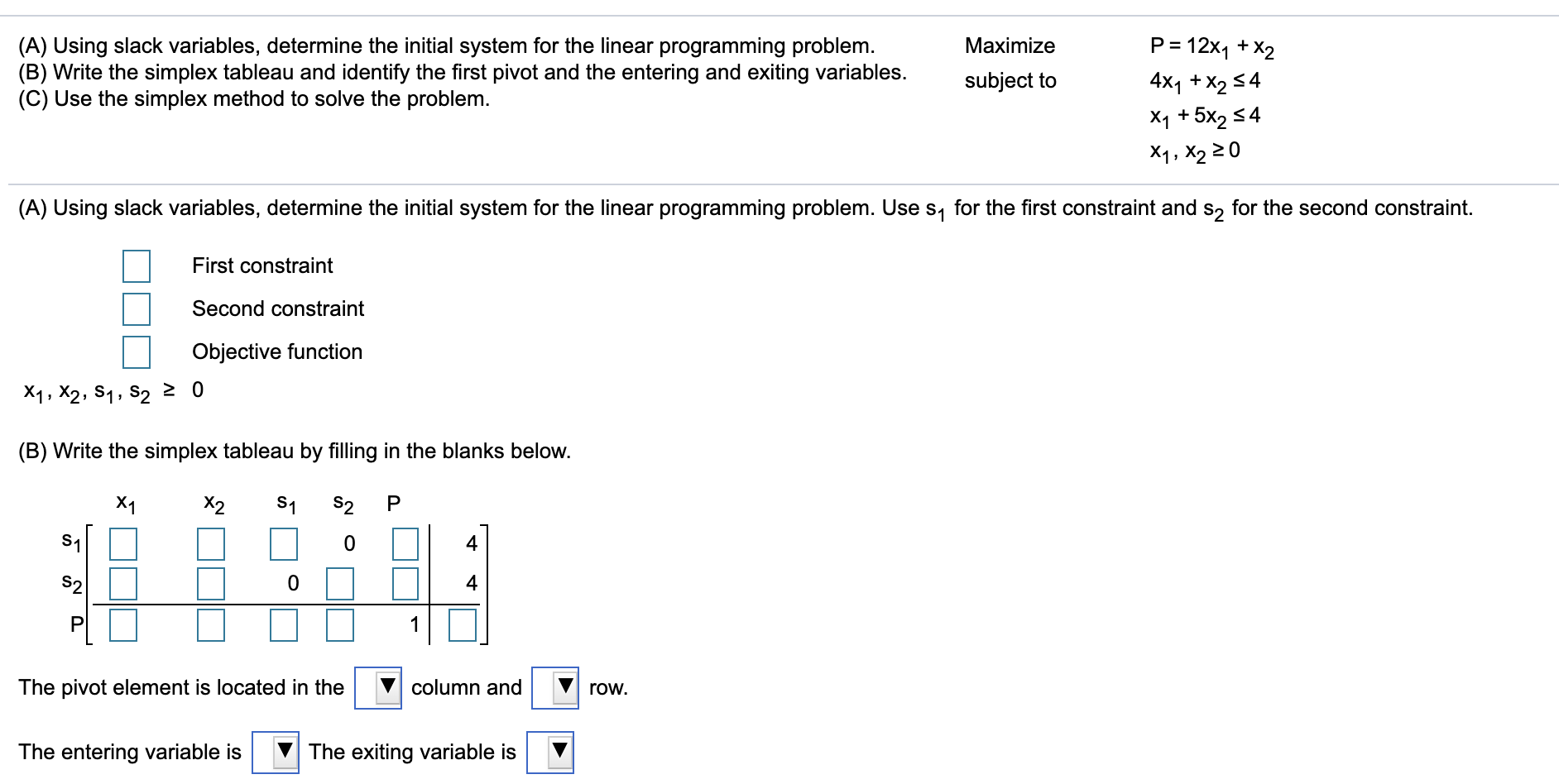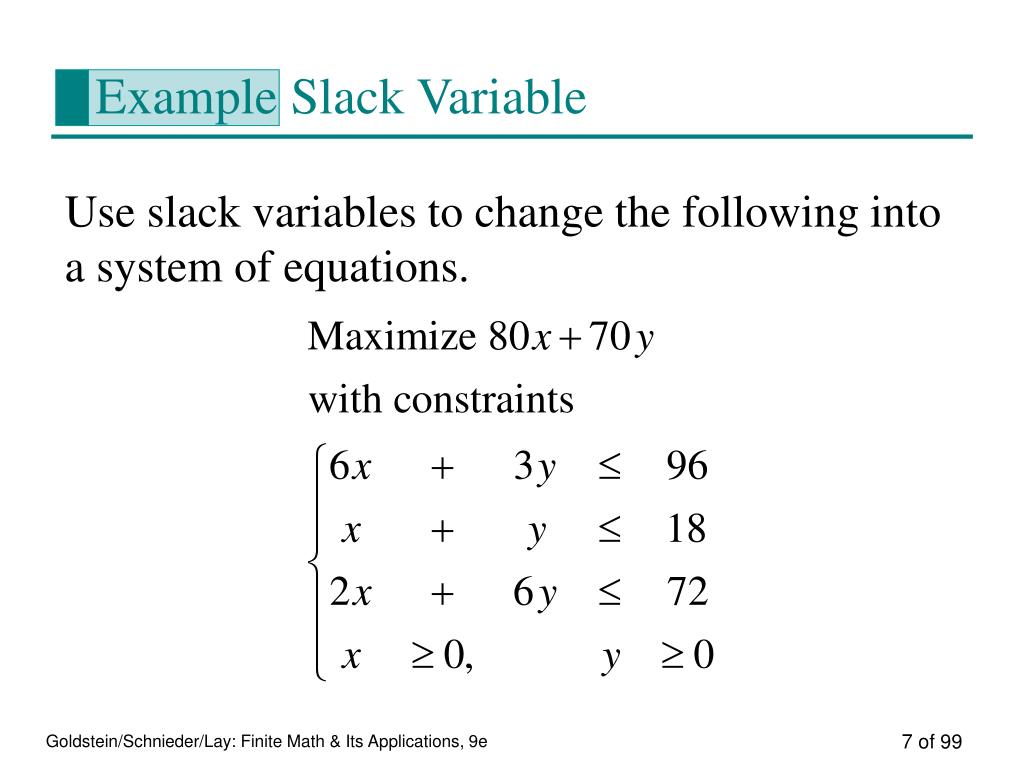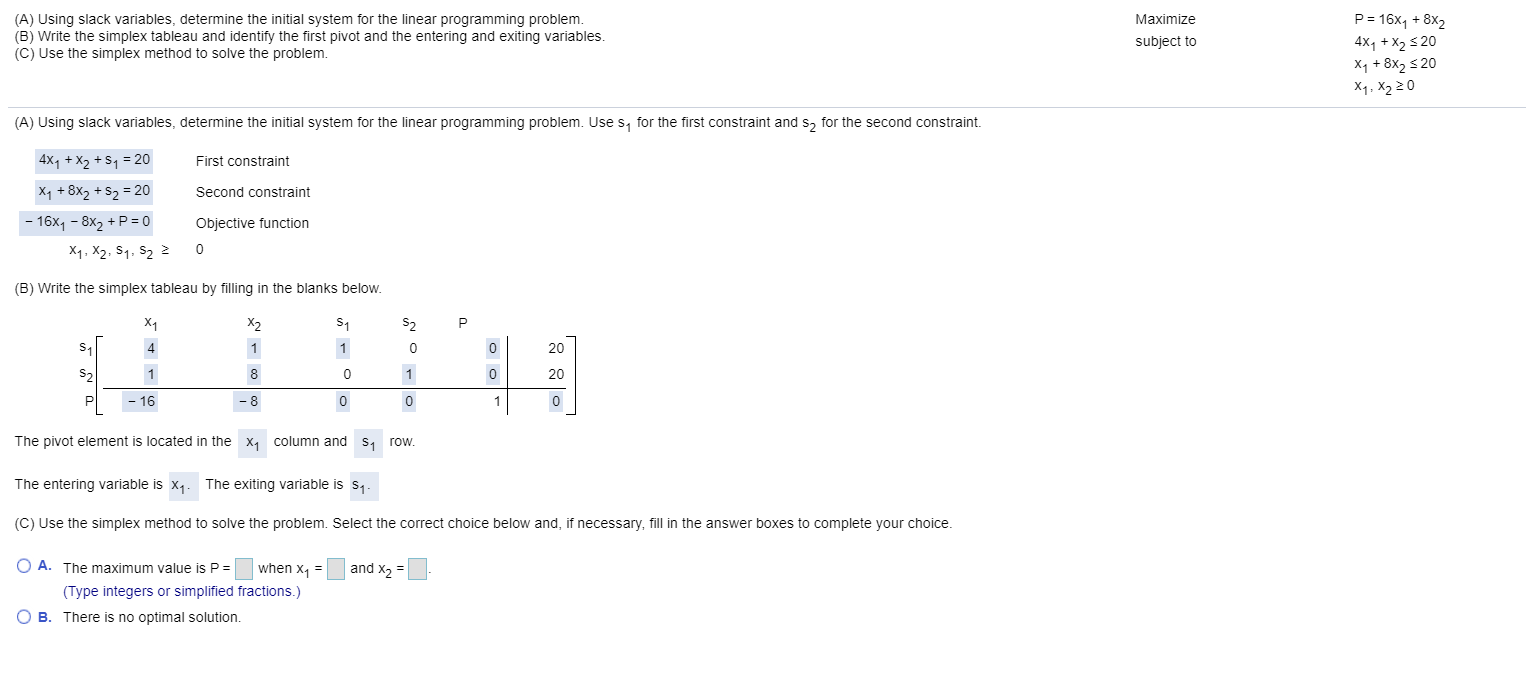Slack Variables
Slack Variables - Learn how to use slack variables to represent discontinuous functions in optimization problems, such as isotonic regression. A slack variable is a new nonnegative variable y which we introduce into the model to convert the ≤ inequality into an equality by adding y from. Learn how to convert lp maximization problems with inequality constraints to lps with equality constraints using slack variables. Slack variables facilitate linear programming methods by converting inequality constraints into equalities, which simplifies the mathematical. A “slack variable” is a nonnegative variable introduced to allow functions with discontinuous derivatives to be represented in the form.
A “slack variable” is a nonnegative variable introduced to allow functions with discontinuous derivatives to be represented in the form. Learn how to use slack variables to represent discontinuous functions in optimization problems, such as isotonic regression. Learn how to convert lp maximization problems with inequality constraints to lps with equality constraints using slack variables. A slack variable is a new nonnegative variable y which we introduce into the model to convert the ≤ inequality into an equality by adding y from. Slack variables facilitate linear programming methods by converting inequality constraints into equalities, which simplifies the mathematical.
Learn how to convert lp maximization problems with inequality constraints to lps with equality constraints using slack variables. Slack variables facilitate linear programming methods by converting inequality constraints into equalities, which simplifies the mathematical. Learn how to use slack variables to represent discontinuous functions in optimization problems, such as isotonic regression. A slack variable is a new nonnegative variable y which we introduce into the model to convert the ≤ inequality into an equality by adding y from. A “slack variable” is a nonnegative variable introduced to allow functions with discontinuous derivatives to be represented in the form.
PPT 4.1 Slack Variables and the Simplex Method PowerPoint
Slack variables facilitate linear programming methods by converting inequality constraints into equalities, which simplifies the mathematical. A “slack variable” is a nonnegative variable introduced to allow functions with discontinuous derivatives to be represented in the form. Learn how to convert lp maximization problems with inequality constraints to lps with equality constraints using slack variables. A slack variable is a new.
PPT 4.1 Slack Variables and the Simplex Method PowerPoint
Learn how to use slack variables to represent discontinuous functions in optimization problems, such as isotonic regression. Slack variables facilitate linear programming methods by converting inequality constraints into equalities, which simplifies the mathematical. Learn how to convert lp maximization problems with inequality constraints to lps with equality constraints using slack variables. A slack variable is a new nonnegative variable y.
Introducing Slack Variables YouTube
Learn how to use slack variables to represent discontinuous functions in optimization problems, such as isotonic regression. A “slack variable” is a nonnegative variable introduced to allow functions with discontinuous derivatives to be represented in the form. A slack variable is a new nonnegative variable y which we introduce into the model to convert the ≤ inequality into an equality.
Solved Determine the number of slack variables and name
Learn how to convert lp maximization problems with inequality constraints to lps with equality constraints using slack variables. Learn how to use slack variables to represent discontinuous functions in optimization problems, such as isotonic regression. Slack variables facilitate linear programming methods by converting inequality constraints into equalities, which simplifies the mathematical. A slack variable is a new nonnegative variable y.
Slack Variables YouTube
A slack variable is a new nonnegative variable y which we introduce into the model to convert the ≤ inequality into an equality by adding y from. Slack variables facilitate linear programming methods by converting inequality constraints into equalities, which simplifies the mathematical. Learn how to convert lp maximization problems with inequality constraints to lps with equality constraints using slack.
Solved (A) Using slack variables, determine the initial
A slack variable is a new nonnegative variable y which we introduce into the model to convert the ≤ inequality into an equality by adding y from. Slack variables facilitate linear programming methods by converting inequality constraints into equalities, which simplifies the mathematical. A “slack variable” is a nonnegative variable introduced to allow functions with discontinuous derivatives to be represented.
PPT Chapter 4 PowerPoint Presentation, free download ID365253
Learn how to convert lp maximization problems with inequality constraints to lps with equality constraints using slack variables. Slack variables facilitate linear programming methods by converting inequality constraints into equalities, which simplifies the mathematical. A “slack variable” is a nonnegative variable introduced to allow functions with discontinuous derivatives to be represented in the form. Learn how to use slack variables.
PPT SVM for Regression PowerPoint Presentation, free download ID
A slack variable is a new nonnegative variable y which we introduce into the model to convert the ≤ inequality into an equality by adding y from. Slack variables facilitate linear programming methods by converting inequality constraints into equalities, which simplifies the mathematical. Learn how to convert lp maximization problems with inequality constraints to lps with equality constraints using slack.
Solved (A) Using slack variables, determine the initial
A “slack variable” is a nonnegative variable introduced to allow functions with discontinuous derivatives to be represented in the form. A slack variable is a new nonnegative variable y which we introduce into the model to convert the ≤ inequality into an equality by adding y from. Learn how to convert lp maximization problems with inequality constraints to lps with.
Schematic illustration of linear SVM. Slack variables ξ p are
Learn how to use slack variables to represent discontinuous functions in optimization problems, such as isotonic regression. A slack variable is a new nonnegative variable y which we introduce into the model to convert the ≤ inequality into an equality by adding y from. A “slack variable” is a nonnegative variable introduced to allow functions with discontinuous derivatives to be.
Learn How To Use Slack Variables To Represent Discontinuous Functions In Optimization Problems, Such As Isotonic Regression.
A “slack variable” is a nonnegative variable introduced to allow functions with discontinuous derivatives to be represented in the form. Slack variables facilitate linear programming methods by converting inequality constraints into equalities, which simplifies the mathematical. Learn how to convert lp maximization problems with inequality constraints to lps with equality constraints using slack variables. A slack variable is a new nonnegative variable y which we introduce into the model to convert the ≤ inequality into an equality by adding y from.









